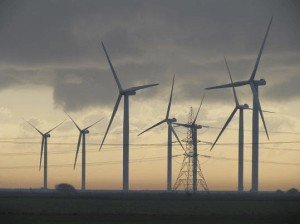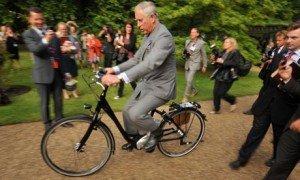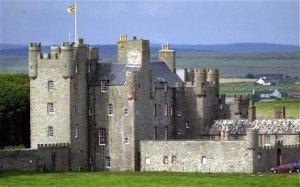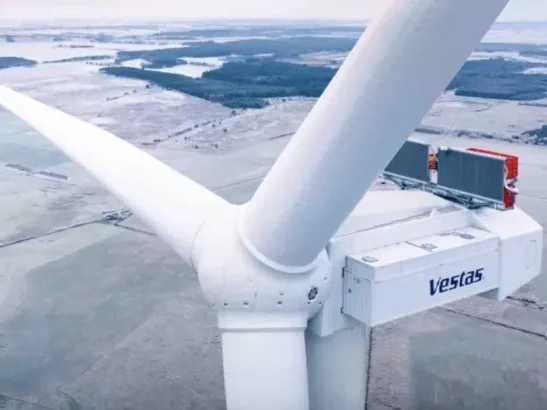Prince Charles, the heir to the British throne, once called a windfarm “a blot on the landscape”. However it’ll be interested to see if he changes his tune because he looks set to benefit from the erection of onshore windfarms in England and Wales.
His Father, the Duke of Edinburgh, Prince Philip, is also not known for his tolerance of renewable energies- in November last year when referring to wind power technology he said it was “absolutley useless, completely reliant on subsidies and an absolute disgrace” However in distinct contrast, Prince Andrew, the Duke of York, gave a thumbs up for wind power: “The Duke sees renewables as an important opportunity for the UK,” confirmed his spokesman.
Under a change in funding arrangements for the royal household due to come into effect next year, the upkeep of his London home, Clarence House and the costs of his official trips on private charter jets and the royal train will be funded through income from the crown estate, which leases out land for the largest onshore windfarm in the south of England at Romney Marsh. It is also planning several more in Wales and Lincolnshire that could together deliver £1m a year in revenues.

The Prince is understood to be strongly opposed to onshore wind turbines that rise higher than 100 metres because of their visual impact and none have been erected on land owned by the Duchy of Cornwall, the £700m estate that provides him with a private income. He has lobbied government officials to subsidise other renewable energy sources and is reported to believe that if windfarms should be built at all, they should be far out at sea.
The apparent clash between the prince’s environmental principles and the crown estate’s desire to invest in onshore wind power will be triggered by the Soveriegn Grant Act which means that from 2013 the royal family will receive 15% of profits from the crown estate, instead of direct government grants, to cover travel costs and maintenance of the royal palaces including Buckingham Palace.
In the past few years, the crown estate has signed a 25-year lease with the renewable energy company RWE for turbines at Little Cheyne Court windfarm in Kent and has agreed lease options with Renewable Energy Systems, which wants to erect 15 turbines in Carmarthenshire, with RWE npower for four turbines in Powys and with EON for 17 turbines on the Billingborough estate in Lincolnshire.
The windfarms could produce revenues to the operators of around £20m a year and fees to the crown estate of around £1m, according to estimates from Renewables UK the wind and marine energy industry group.
“It is hypocrisy,” said Leanne Wood, a candidate for the Plaid Cymru leadership who is campaigning for Welsh energy independence. “[The prince] stands to benefit from wind projects on land in Wales, but opposes them himself. If that is his position there shouldn’t be windfarms on crown estate land.”
“They speak against them and they don’t want the noise and ugliness near them but it seems they don’t mind reaping the profits if they are near us,” said Snowy Wilson, 66, a resident of Llanllwni Mountain, where the crown estate is considering erecting turbines.
A spokesman for the prince denied he was acting in any way hypocritically and stressed that the royal family played no part in the running of the crown estate.
“In the case of the Prince of Wales, the sovereign grant funding is mostly used to meet the costs of the official overseas tours which he and other members of the royal family undertake on behalf of the country, so the spending of that money is ultimately determined by the government,” the spokesman said. “The vast majority of the prince’s official costs are met out of his private income from the Duchy of Cornwall.”
Last year, the crown estate earned £3.5m from renewable energy on its marine estate, which comprises almost all of the seabed out to 12 nautical miles.
It has invested £100m in its offshore wind programme and its latest tranche of windfarm development alone could provide around 25% of the UK’s total electricity needs by 2020, it claims. Profits of at least £100m a year could result, according to industry estimates, which would mean an income to the royals from offshore wind power alone of £15m.
However, plans for a huge turbine in view of the Prince of Wales’s bedroom window have been rejected by the Scottish Parliament.
Barrogill Angus, a farmer, has lost his appeal against a decision by planners to refuse a wind turbine on his land near the Castle of Mey in Caithness, where Prince Charles stays for a week every August.
An official appointed by Scottish ministers dismissed the appeal because neighbouring houses could be affected by the noise from the 67ft turbine.
“I acknowledge the modest but nonetheless useful contribution which the proposal would make towards renewable energy targets,” said the official.
“In this case, however, I find that to be outweighed by the potentially adverse impact on residential amenity.”





